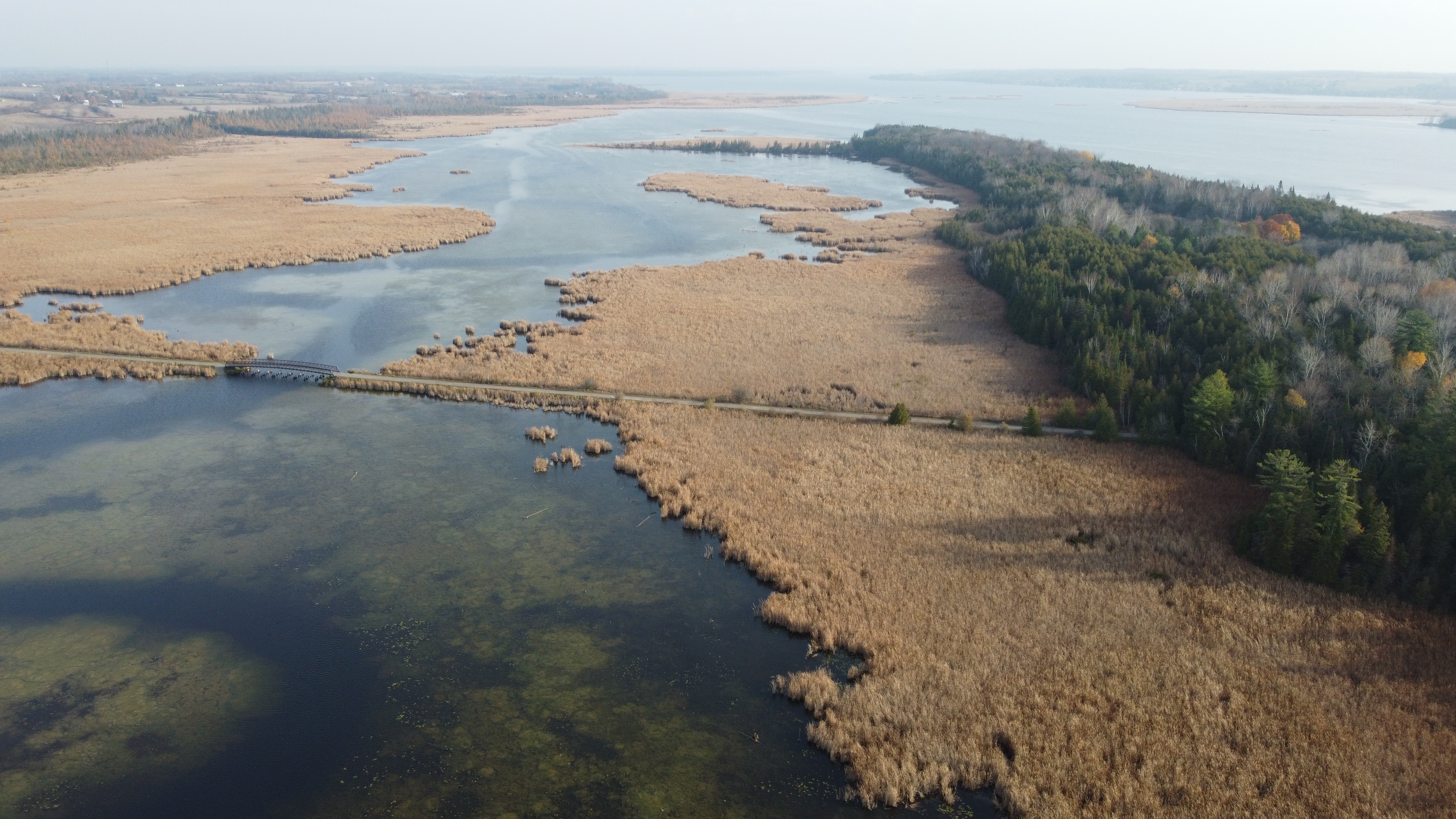Get to Know Your Local Wetlands: Nature’s Summer Symphony and Ecological Powerhouse

As summer settles across the Kawarthas, the region’s wetlands burst to life with a chorus of croaking frogs, fluttering dragonflies, and the gentle sway of cattails. While they may appear quiet and unassuming, wetlands are among the most vibrant, life - sustaining ecosystems in Ontario - and the summer months are their peak season.
“They’re not just bug-infested wet or soggy places,” said Brett Tregunno, Aquatic Biologist with Kawartha Conservation. “Wetlands are absolutely essential for biodiversity, water quality, and protecting our communities from flooding. They do more than most people realize.”
From Provincially Significant Wetlands to small, seasonal pools nestled in forests and fields, these landscapes play an outsized role in keeping our environment - and ourselves - healthy.
Frog calls are one of the surest signs of a thriving wetland. During summer evenings, the high-pitched chirping sound of the spring peeper and the deep croak of the bullfrog echo through marshes and shallow ponds.
“Frogs are like a pulse check for our wetlands,” said Tregunno. “When amphibians are thriving, it’s a strong indication that the surrounding habitat is in balance.”
Because amphibians breathe through their skin and rely on both water and land, they are highly sensitive to pollution and changes in their environment. “If you’re hearing a lot of frogs,” added Tregunno, “it’s usually a sign that the wetland is in good health.”
Beyond the biodiversity, wetlands serve as natural filtration systems - quietly working to protect our lakes and rivers. Wetland plants and soils trap sediment, absorb nutrients, and break down pollutants before they can reach larger bodies of water.
“It’s like having a water treatment facility built right into the landscape,” said Tanner Liang, Water Quality Specialist at Kawartha Conservation. “Wetlands take the runoff from rainstorms and agriculture and clean it up before it hits our lakes.”
This function becomes especially important during heavy rains. In summer, when intense storms are more frequent, wetlands can slow down and store water, reducing the risk of downstream flooding and erosion.
During severe weather, wetlands act as nature’s sponges - absorbing excess rainwater and releasing it gradually over time. This not only protects communities from costly flood damage but also helps recharge groundwater supplies and maintain stream flows during dry periods.
“We often think about infrastructure - roads, bridges, culverts - when it comes to stormwater, but wetlands are one of the most effective natural solutions we have,” said Nathan Rajevski, Watershed Resources Technician. “They provide a buffer that protects both natural areas and our built communities.”
The Ontario government has estimated that wetlands can reduce the cost of flood damage by hundreds of millions of dollars across the province. Their importance will only grow as the effects of climate change bring more intense and unpredictable rainfall.
While wetlands cover only a small portion of Ontario’s landmass, they support an outsized share of its biodiversity. More than 20 percent of the province’s species at risk are found in wetlands, including all eight native turtle species.
Wetlands also provide critical stopover habitat for migratory birds and are home to countless insects, fish, and mammals that depend on their unique conditions.
“These are some of the most biologically rich ecosystems in our watershed,” said Tregunno. “They’re nurseries, shelters, feeding grounds - everything.”
While large, Provincially Significant Wetlands are protected under provincial policy, smaller wetlands - sometimes no bigger than a backyard - can be just as important.
“Every wetland matters,” said Tregunno. “Even small or isolated wetlands can provide habitat, slow floodwaters, and clean runoff. Losing them has a ripple effect.”
In agricultural areas, small wetlands help reduce nutrient runoff into streams and lakes. In developed landscapes, they can prevent localized flooding and boost property resilience. Their presence also contributes to local climate regulation, carbon storage, and even recreational enjoyment.
As development pressure increases and climate impacts become more severe, protecting wetlands of all sizes is becoming more urgent.
Tregunno encourages residents to learn more, visit their local conservation areas, and support policies that safeguard these vital ecosystems.
“Wetlands are working for us all the time, whether we see them or not,” he said. “By protecting them, we’re really protecting ourselves.”
To learn more about wetlands and how you can help protect them, visit www.ontario.ca/page/wetland - conservation.
Contact Us
Kawartha Conservation
277 Kenrei Road
Lindsay, ON K9V 4R1
Tel: 705.328.2271
Fax: 705.328.2286
Subscribe to Receive Updates and Notifications
Stay up to date on flood and low water, news, activities, events, programs and operations by subscribing to updates and the Watershed Watch Newsletter.
